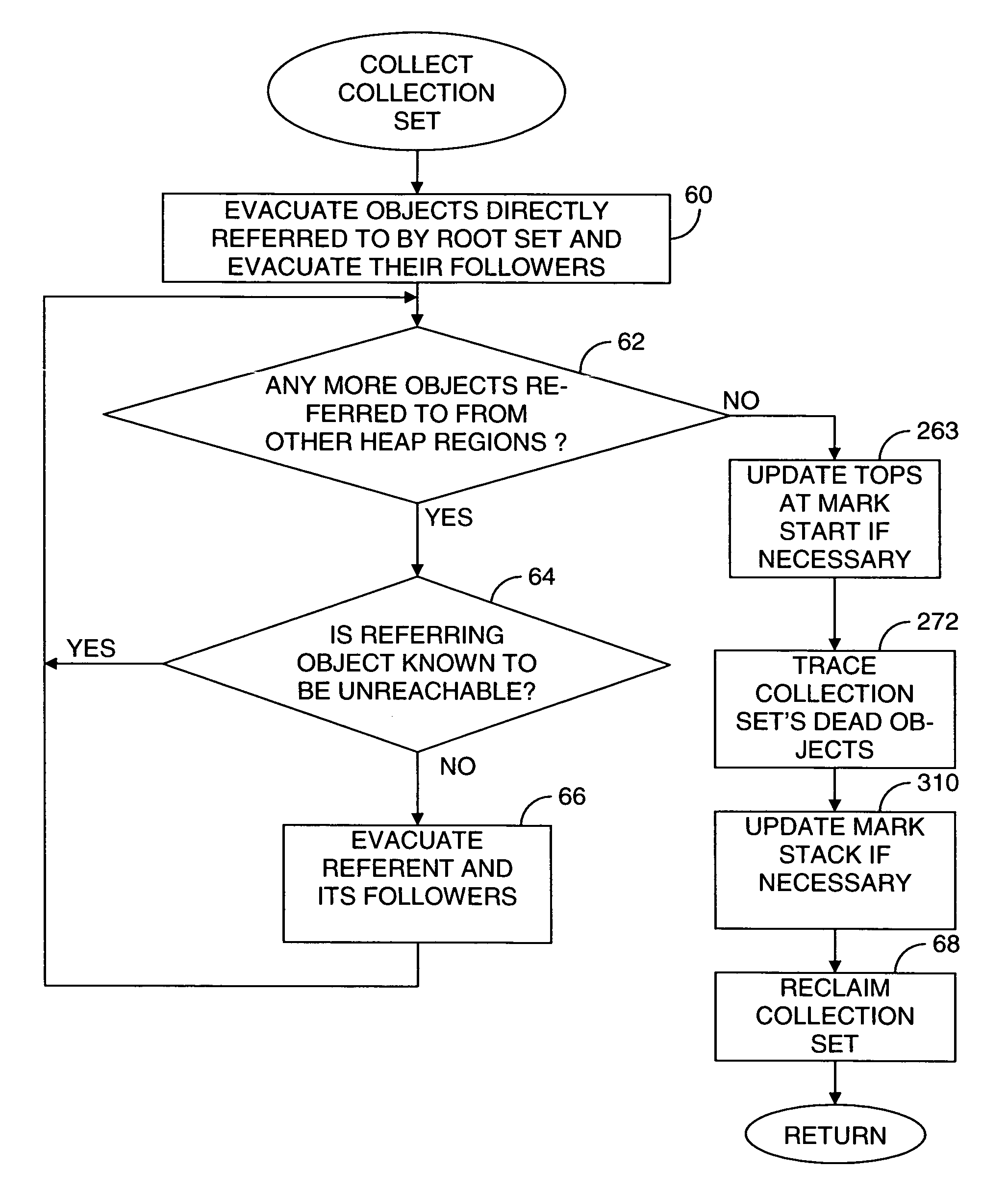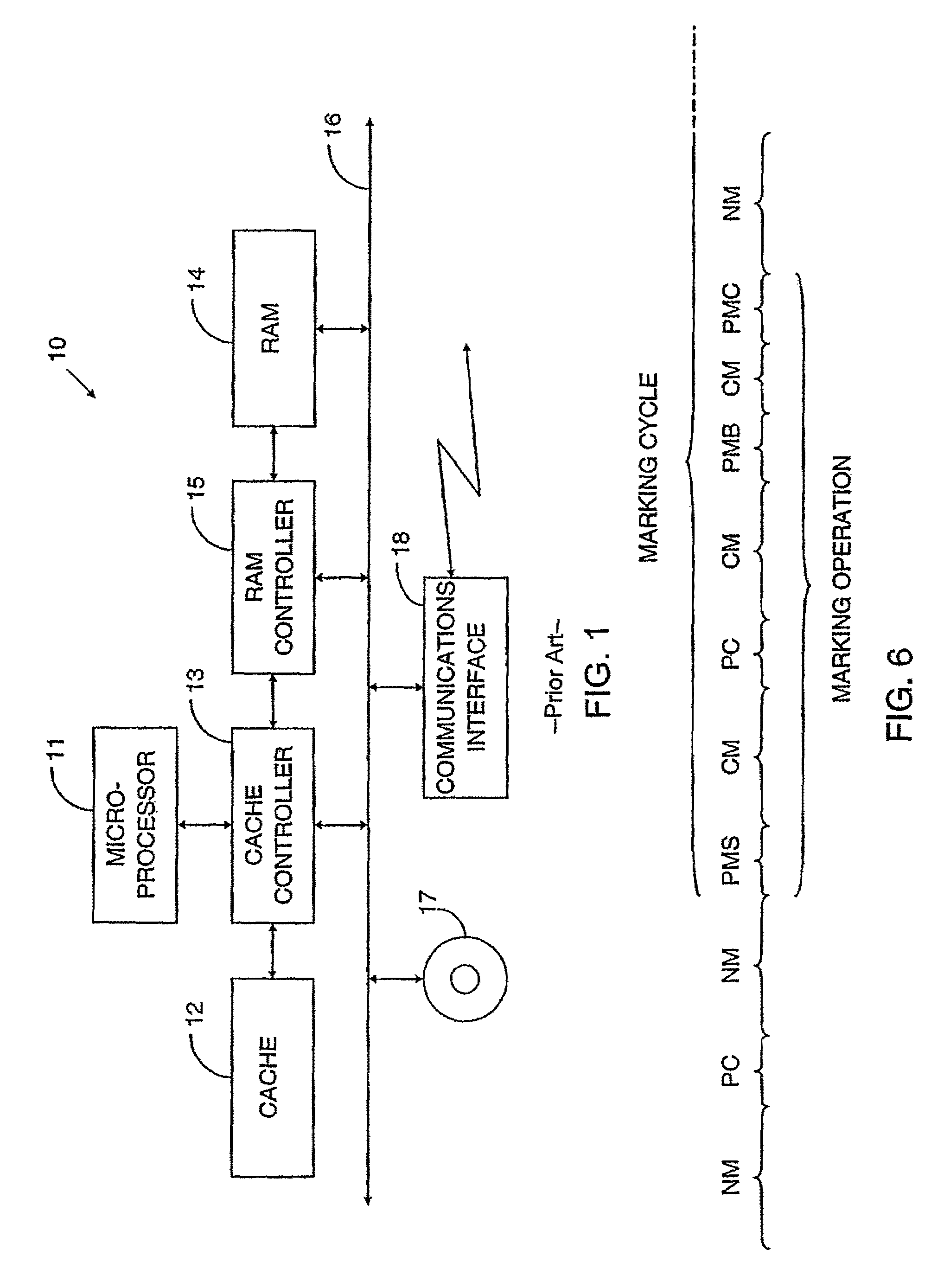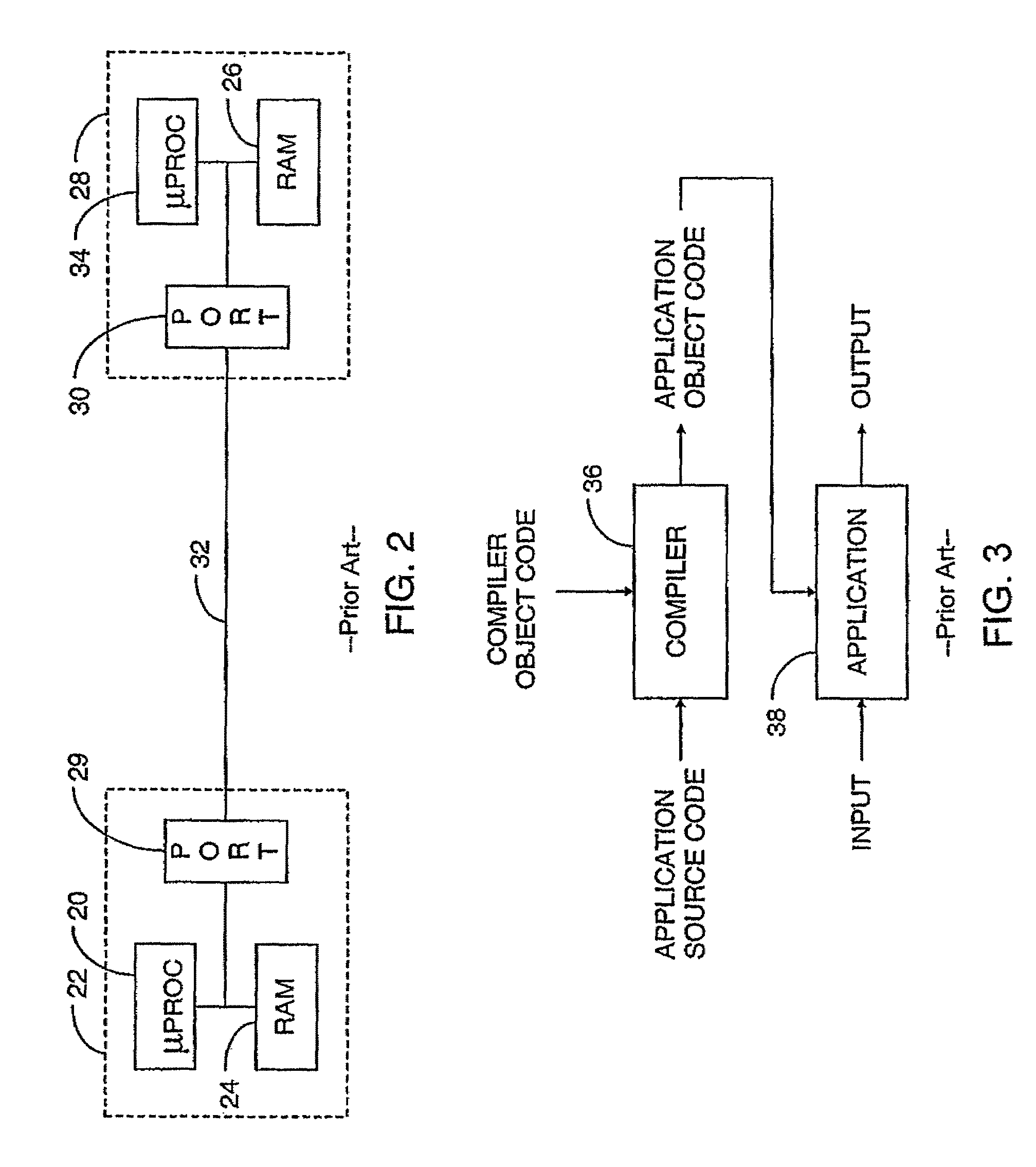Age segregation for garbage collector
a garbage collector and age segregation technology, applied in computing, instruments, electric digital data processing, etc., can solve the problems of inability to restrict storage requirements to the available memory space, application may inadvertently manipulate the same memory in multiple inconsistent ways, and the memory requirements will grow over time to exceed the system's available memory, etc., to achieve more garbage reclamation and enhance collection efficiency.
- Summary
- Abstract
- Description
- Claims
- Application Information
AI Technical Summary
Benefits of technology
Problems solved by technology
Method used
Image
Examples
Embodiment Construction
[0062]The present invention can be implemented in a wide range of garbage collectors. Many such garbage collectors will treat the heaps that they manage as being divided into generations. Initial allocation for new objects will typically occur in a “young” generation, where mortality is expected to be high, i.e., where in many programs most objects soon become unreachable. The young-generation objects whose longevity nonetheless proves to be high are typically promoted into an “older” generation: they are moved to a part of the heap occupied by such longer-lived objects. When such a garbage collector implements the teachings to be set forth below, it may implement them in less than all generations, or it may implement them in every generation.
[0063]Although, as was just stated, the invention can be implemented in multiple-generation collectors, we prefer to implement it in a single-generation collector. The discussion below therefore describes the invention's features by reference t...
PUM
 Login to View More
Login to View More Abstract
Description
Claims
Application Information
 Login to View More
Login to View More - R&D
- Intellectual Property
- Life Sciences
- Materials
- Tech Scout
- Unparalleled Data Quality
- Higher Quality Content
- 60% Fewer Hallucinations
Browse by: Latest US Patents, China's latest patents, Technical Efficacy Thesaurus, Application Domain, Technology Topic, Popular Technical Reports.
© 2025 PatSnap. All rights reserved.Legal|Privacy policy|Modern Slavery Act Transparency Statement|Sitemap|About US| Contact US: help@patsnap.com



